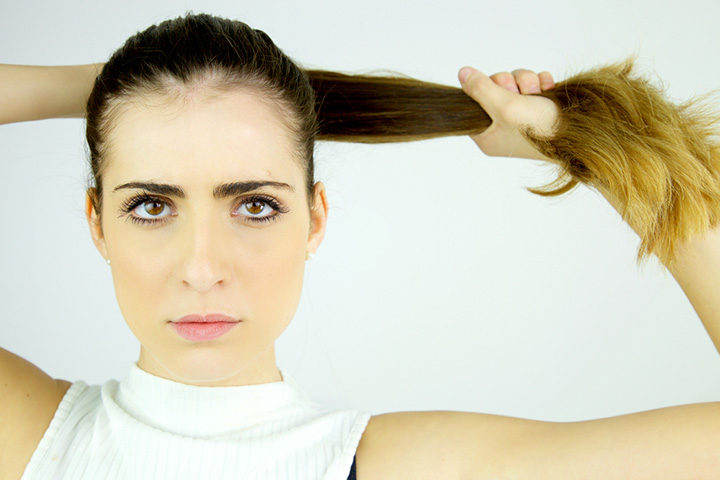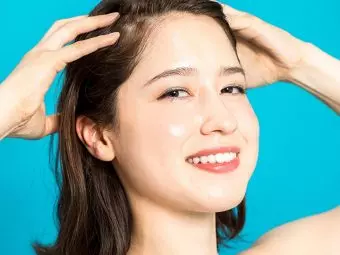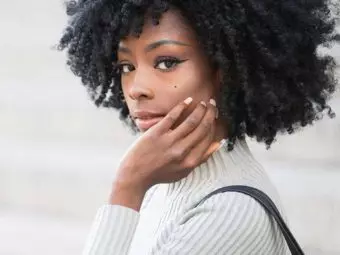There is a threat that your favorite hairstyle may set off hair loss. Styling your hair in tight buns, ponytails, and braids can pull in your hair follicles and set off a state of affairs known as traumatic alopecia.
Traumatic alopecia, usually often called traction alopecia, is a typical sort of hair loss that occurs over a time interval. It is attributable to sporting tight hairstyles. Maintain finding out this textual content to know further in regards to the causes and indicators of traumatic alopecia and the treatment and prevention selections on the market.
In This Article
What Is Traumatic Alopecia?
Alopecia, typically, is the medical time interval for lack of hair. Nonetheless, it could nicely occur in a number of sorts. Traumatic or traction alopecia is a specific sort of acquired hair loss that outcomes primarily from extended or repetitive rigidity on the scalp.
The chances of rising traumatic hair loss are further if there is a forceful extraction of hair or the breaking of hair shafts by stress, traction, friction, or each different bodily trauma (1).
It is vital to know the causes of this case to efficiently handle traumatic hair loss. Its causes are talked about throughout the subsequent half.
What Is The Set off Of Traumatic Alopecia?
Traumatic alopecia is primarily attributable to sporting the equivalent hairstyle for extended intervals, significantly ones that tug on the hair, similar to tight ponytails, braids, buns, cornrows, and heavy locks that set off hair trauma.
Totally different causes of traumatic alopecia embody:
- Excessive and repeated use of hair devices similar to rollers or scorching combs.
- Inserting fastened energy on the hair or scalp flooring and pulling which will set off loosening of the hair from the follicles.
Heavy use of hair relaxers or chemical substances used to straighten hair.
- Repeated use of heavy hair extensions.
- Using terribly tight head covers similar to caps or turbans that pull in your hair.
- Fluctuating hormone ranges.
There is a broad variation throughout the pattern of indicators, scientific presentation, and kinds of alopecia. Be taught the next half to go looking out out further about it.
Indicators Of Traumatic Alopecia
The early indicators of traumatic alopecia embody little bumps on the scalp that resemble pimples. Nonetheless, as a result of it progresses, the first symptom most frequently is hair fall or broken hair, significantly on the doorway and sides of your scalp (2).
Other than hair loss, completely different indicators of traumatic or traction alopecia ensuing from potential harm to hair follicles embody (2):
- Soreness or stinging sensation on the scalp
- Itching and redness of the scalp
- Thinning of hair
- Receding hairline
- Broken hair or hair hurt
- Folliculitis or irritation of the hair follicles
- Extreme scaling of scalp pores and pores and skin
- Frequent issues
- Blisters on the scalp
- Progress of vellus hair (peach fuzz) on affected areas
- Widening of hair parting
- Damaged and scarred hair follicles which is perhaps unable to produce new hair
- Can lead to telogen effluvium and diffuse hair loss
Now that you just perceive the indicators of traumatic alopecia, you must be questioning who’s most likely to get affected by this case. Be taught on to know further about it.
Who Will get Most Affected By Traumatic Alopecia?
Usually, traumatic alopecia can impression of us of all ages, every females and males. Nonetheless, there are specific populations who’re further affected by the state of affairs ensuing from variations in hair development, hairstyles, and lifestyle elements.
For instance, hair loss after trauma (ensuing from traction) is commonest in grownup women (2). It is common amongst women with prolonged hair who tie it up in tight hairstyles. Moreover, people who incessantly placed on wigs, tight hats, helmets, and folk particularly professions that require them to tug their hair once more, similar to military personnel, ballerinas, gymnasts, and surgeons, are affected by this case. People of African descent sometimes bear from this case because of their hair is often curly, fragile, and tied tightly in defending hairstyles, which leads to breakage.
Questioning for those who occur to can forestall traumatic alopecia altogether or if there are any treatment selections? Uncover out beneath.
Prevention Concepts And Therapies For Traumatic Alopecia
In distinction to completely different genetic forms of hair loss, traumatic alopecia could also be dealt with. If acknowledged and dealt with at an early stage, it is solely reversible, and the hair can regrow. Nonetheless, if left untreated, the hair follicles can rapidly develop to be irreversibly damaged, leading to obstructed hair progress.
The treatment and the preventive measures after prognosis every have fairly a bit in frequent, so it is best to view them as an entire. Given beneath are preventative solutions along with treatment selections for traumatic alopecia:
1. Avoid Tight Hairstyles
Since pulling of hair ensuing from very tight hairstyles similar to ponytails, braids, buns, and dreadlocks is the principle purpose behind traumatic alopecia, it is best to avoid such hairstyles. If you must utterly tie your hair up, be sure you protect it as unfastened as potential.
2. Limit The Use Of Heat-Styling Devices
Heat-based styling devices similar to rollers, straightening irons, and curlers must be used solely when utterly very important as they are going to set off irreversible harm to the hair follicles, leading to traumatic alopecia.
3. Try Completely completely different Hairstyles
Sporting just one hairstyle similar to a parting down the middle of the equivalent side for years additionally may end up in traumatic alopecia. To avoid putting an extreme quantity of stress on specific components of your scalp, be sure you alter your hairstyle every few weeks.
4. Avoid Excessive Use Of Styling Merchandise
Chemical compounds or completely different hair relaxers used for sorts like perms or eternal straightening must be saved to a minimal as these styling gels or sprays can harden the hair, leading to elevated hair rigidity and a greater hazard of traumatic alopecia.
Prime-of-the-line treatments for traumatic alopecia is to scale back the utilization of harsh chemical substances on damaged strands of hair, as they are going to solely worsen the state of affairs. Go for plant-based cosmetics or cures as an alternative choice to guard your hair from harmful chemical substances.
Subscribe
5. Maintain The Use Of Hair Gear To A Minimal
Hair extensions and gear can pull in your pure hair and enhance rigidity in your scalp. It is, subsequently, actually helpful to placed on hair gear solely when very important or try to make use of them in a number of sorts. Allow your hair to rest, and try to avoid the utilization of clips, bands, and clutches on a frequent basis. Moreover, uncover completely completely different hairstyles every few days to cease pointless stress on any area of your scalp.
6. Choose The Correct Wigs
In case you’re using hair wigs, be sure you select one which has a base manufactured from a fabric that causes a lot much less friction with the scalp to scale back the probabilities of traumatic alopecia.
7. Use Hair Progress Merchandise
Extreme-quality hair progress merchandise similar to minoxidil would possibly show you how to cope with traumatic alopecia and facilitate regrowth of hair (3). Nonetheless, it is best to utilize it after due session collectively together with your doctor.
8. Use Anti-Inflammatory Lotions
Amongst completely different indicators, traumatic alopecia moreover causes swelling in your scalp, which can be truly painful. Using an anti-inflammatory cream could also be useful in reducing ache and swelling.
9. Search Medical Help
If there is no such thing as a such factor as a seen enchancment and regrowth of hair after taking these measures for only a few months, it is endorsed to hunt medical consideration as a result of it could be a case of utmost hair harm.
Closing Phrases
Traumatic alopecia is a typically reported hair state of affairs, and it is completely preventable. The difficulty is generally attributable to the hair strands being yanked repeatedly for a protracted time interval. That’s often attributable to repeatedly sporting tight ponytails, braids, buns, or any hairstyle that tugs on the tresses. Thankfully, traumatic alopecia could also be efficiently dealt with if detected early.
Maintain your hair tied in unfastened hairdos to avoid putting stress on the equivalent a part of the scalp time and again. Whereas it would take a bit little bit of time in your locks to heal appropriately and regrow, for those who occur to cope with the state of affairs tenderly and steadily, there must be no long-term harm.
Usually Requested Questions
Is it important to go to a doctor for traumatic alopecia?
It goes with out saying that it is best to watch a hair care routine for traumatic alopecia beneath a doctor’s steering. They might know exactly what’s required to reinforce your state of affairs, and there is perhaps minimal hazard of one thing going incorrect (which could happen for those who occur to start treatment by your self).
Is it best to avoid sulfate shampoos with traumatic alopecia?
Certain. Sulfate shampoos are harmful for people with out traumatic alopecia. So, it is best to avoid them.
Key Takeaways
- Styling the hair in tight buns, ponytails, and braids can pull on hair follicles and set off traumatic alopecia, a state of affairs that leads to hair loss.
- This example is solely reversible and the hair can regrow whether or not it’s acknowledged and dealt with at an early stage.
- Avoid tight hairstyles or the equivalent hairstyle for extended intervals, overstyling or excessive heat treatments to cope with and forestall traumatic alopecia.
References:
Articles on StyleCraze are backed by verified data from peer-reviewed and academic evaluation papers, reputed organizations, evaluation institutions, and medical associations to verify accuracy and relevance. Be taught our editorial protection to review further.
- Frontal pattern hair loss amongst Chinese language language women is incessantly associated to ponytail hairstyle
https://pubmed.ncbi.nlm.nih.gov/30458063/ - Traction Alopecia
https://www.ncbi.nlm.nih.gov/books/NBK470434/ - Minoxidil and its use in hair points: a consider
https://www.ncbi.nlm.nih.gov/pmc/articles/PMC6691938
Related
The following two tabs change content material materials beneath.
- Creator
- Reviewer

Arshiya Syeda
Arshiya Syeda is an editor at StyleCraze. Earlier to that, she was a content material materials writer and blended her writing and… further
Dr. Amrendra Kumar
(MD (Dermatology))Dr. Amrendra Kumar has over 14 years of experience in hair transplantation and vitiligo surgical process. He is the Director and… further


 What Is Pre-Poo? Its Benefits, Types, & Concepts To Help
What Is Pre-Poo? Its Benefits, Types, & Concepts To Help Bleaching Your Hair with Coconut Oil – A Step by Step Data
Bleaching Your Hair with Coconut Oil – A Step by Step Data 15 Biggest Meals For Hair Progress You Should Be Consuming Every day
15 Biggest Meals For Hair Progress You Should Be Consuming Every day How To Use Jamaican Black Castor Oil For Hair Progress
How To Use Jamaican Black Castor Oil For Hair Progress How To Exfoliate Your Scalp At Home To Clear Additional Oil
How To Exfoliate Your Scalp At Home To Clear Additional Oil How To Apply Oil On Hair: A Step-By-Step Data
How To Apply Oil On Hair: A Step-By-Step Data How To Use Coconut Oil For Dry Scalp And Dandruff
How To Use Coconut Oil For Dry Scalp And Dandruff Simple Method To Get The Good Twist Out On 4C Pure Hair
Simple Method To Get The Good Twist Out On 4C Pure Hair Eyebrow Hair Loss: Causes, Prevention Concepts, & DIY Methods
Eyebrow Hair Loss: Causes, Prevention Concepts, & DIY Methods
Leave feedback about this